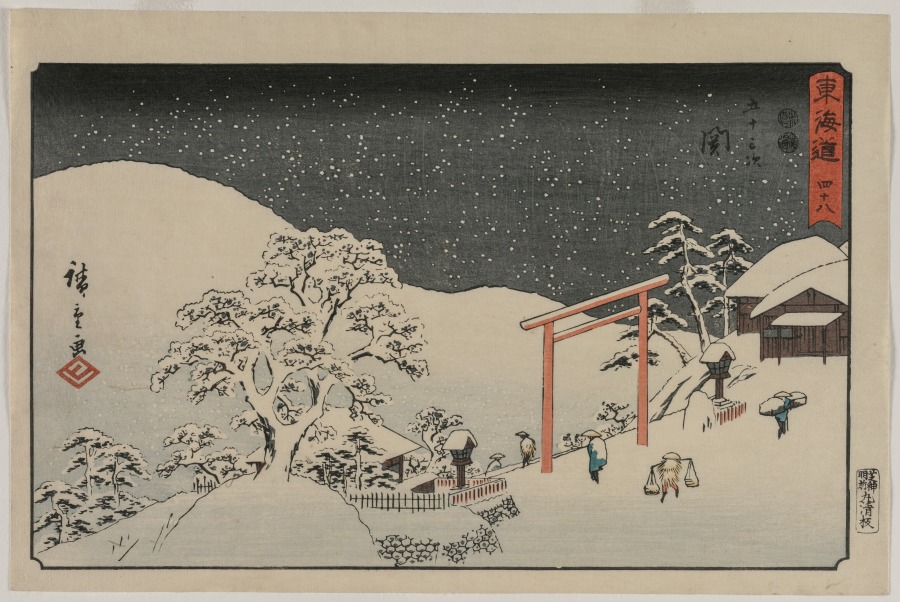| schema:description 10 | "inscription: Signature: Hiroshige ga
Artist Seal: Hiro
Publisher: Maruya Seibei (Marusei han, Shiba Shimmei Mae)
Censorship Seal: Mera, Watanabe...(more)" |
| schema:description | "creditline: Bequest of Edward L. Whittemore" |
| schema:description | "id: 111651" |
| schema:description | "culture: Japan, Edo period (1615-1868)" |
| schema:description | "measurements: Sheet: 24.8 x 37.5 cm (9 3/4 x 14 3/4 in.)" |
| schema:description | "type: Print" |
| schema:description | "tombstone: Seki, from the series The Fifty-Three Stations of the Tōkaidō, c. 1848-49. Utagawa Hiroshige (Japanese, 1797-1858). Color woodblock print; sheet: 24.8 x 37.5 cm (9 3/4 x 14 3/4 in.). The Cleveland Museum of Art, Bequest of Edward L. Whittemore 1930.186...(more)" |
| schema:description | "collection: Japanese Art" |
| schema:description | "technique: Color woodblock print" |
| schema:description | "wall_description: This print from one of Hiroshige’s later Tōkaidō series completely reconceives the scene at Seki. An earlier series showed an entourage of a daimyō, preparing to leave an inn, but this view plunges the station into the depths of a dark winter. Daimyō were regional military rulers during Japan’s Edo period. As the central government required them to live in the capital, Edo, in alternating years, daimyō processions along the Tōkaidō thoroughfare were a frequent sight. This print, however, emphasizes the pilgrimage route to Japan’s principal site of religious worship, the Ise Shrine, indicated by the traditional red gate to the shrine....(more)" |

